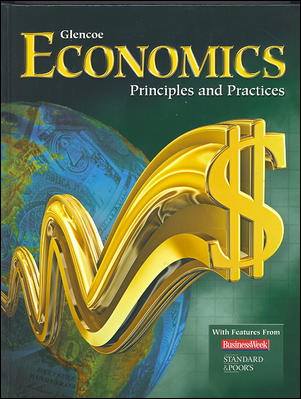 |
| 1 |  | 
Which of the following terms is correctly defined? |
|  | A) | public sector – composed of state governments and state-licensed businesses |
|  | B) | transfer payment – government receives no goods or services in exchange for the payment |
|  | C) | subsidy – a transfer payment to state or local governments. |
|  | D) | private sector – composed of local governments and businesses |
|
|
 |
| 2 |  | 
An example of the transfer payment called a grant-in-aid is ______. |
|  | A) | aid for people with disabilities |
|  | B) | construction programs for public school |
|  | C) | capital goods for schools and laboratories |
|  | D) | salaries paid to people in government agencies |
|
|
 |
| 3 |  | 
Which of the following would be an example of "pork" spending? |
|  | A) | funds to improve the Father Damian Museum in Hawaii. |
|  | B) | funds to improve the interstate highway system. |
|  | C) | payments to Social Security recipients |
|  | D) | payments to military personnel |
|
|
 |
| 4 |  | 
Which of the following is an example of a subsidy? |
|  | A) | payments to wheat farmers that make up the difference between a target price and the market price. |
|  | B) | payments to construction companies to renovate the White House |
|  | C) | Social Security and unemployment benefits payments |
|  | D) | payments to medical personnel who work at the Veterans Administration hospitals. |
|
|
 |
| 5 |  | 
The largest expenditure in the federal budget for fiscal year 2007 was _____. |
|  | A) | national defense |
|  | B) | Medicare |
|  | C) | Social Security |
|  | D) | interest on the national debt |
|
|
 |
| 6 |  | 
Some state governments are limited in their spending by _____. |
|  | A) | the refusal of county judges to approve spending |
|  | B) | the limited revenues collected from property taxes |
|  | C) | a balanced budget amendment in their constitution |
|  | D) | an increase in sales taxes and state income taxes |
|
|
 |
| 7 |  | 
A category that local governments spend on but state governments do not is _____. |
|  | A) | correction facilities |
|  | B) | fire protection |
|  | C) | police protection |
|  | D) | hospitals |
|
|
 |
| 8 |  | 
The total amount borrowed from investors to finance government spending is known as _______. |
|  | A) | deficit spending |
|  | B) | discretionary spending |
|  | C) | the national debt |
|  | D) | the budget deficit |
|
|
 |
| 9 |  | 
What effect does the national debt have on the nation? |
|  | A) | Lower debt levels reduce private sector purchasing power. |
|  | B) | Government borrowing can lead to higher interest rates for businesses and individuals. |
|  | C) | Current taxpayers will have to finance anticipated future debt. |
|  | D) | The government sacrifices purchasing power when it borrows. |
|
|
 |
| 10 |  | 
What is the difference between the national debt and the federal deficit? |
|  | A) | Both the federal deficit is the national debt relate to one years borrowing to cover excess spending. |
|  | B) | The national debt is composed of all borrowing to cover the annual federal deficits. |
|  | C) | The federal deficit consists of public sector debt while the national debt includes both public and private sector debt. |
|  | D) | The national debt includes all funds owed by all levels of government while the federal deficit reflects only what the federal government owes. |
|
|





